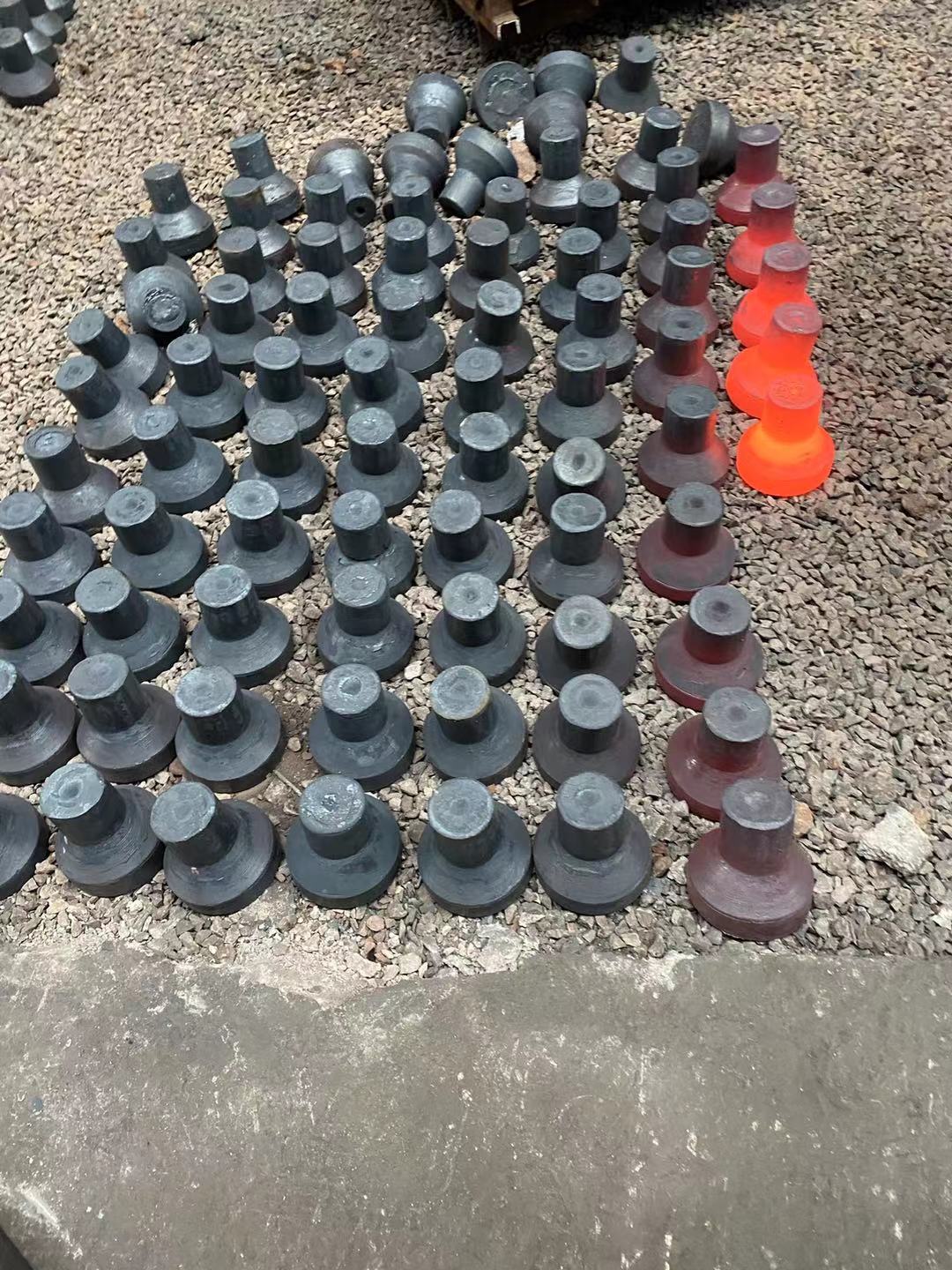Heat treatment and tempering process of forging works
The heat treatment process of the forgings processed by the forgings factory after quenching is reheated to the critical temperature, heated to the appropriate temperature after a period of heat preservation in air or water, oil and other media cooling, is the tempering process of the forgings.
Forgings factory after quenching heating to the appropriate temperature, insulation for a certain time, and then slowly or quickly cooling. Can reduce or eliminate the internal stress in hardened forgings, or reduce their hardness and strength, to improve their ductility or toughness. Quenched forgings should be tempered in time, through quenching and tempering with the required mechanical properties of forgings can be obtained. The tempering of forgings is heated to a certain temperature below AC1 after hardening, heat preservation for a certain time, and then cooling, tempering is generally followed by quenching. (The picture shows the ring forgings after tempering)
First, the purpose of forging tempering:
1, eliminate the residual stress produced by quenching forgings, prevent deformation and cracking;
2. Adjust the hardness, strength, plasticity and toughness of the forgings to meet the requirements of customer performance;
3, stable forging structure and size, to ensure accuracy;
4, improve and improve the performance of forging processing. Tempering is an important process for forging to obtain desired properties.
Two, tempering temperature classification:
1, low temperature:
Tempering of forgings below 250℃. The purpose is to maintain the higher hardness and wear resistance of quenched forgings and reduce the quenched residual stress and brittleness. Tempered martensite refers to the structure obtained when quenching martensite is tempered at low temperature.
Mechanical properties: 58 ~ 64HRC, high hardness and wear resistance.
Application: cutting tools, measuring tools, molds, rolling bearings, carburized and surface hardened parts, etc.
2, medium temperature:
Forging tempering between 250 ~ 500 ℃. In order to get higher elasticity and yield point, appropriate toughness. Tempered tortenite, refers to the ferrite matrix formed during the tempering of martensite distributed in extremely fine spherical carbide (or cementite) complex structure.
Mechanical properties: 35 ~ 50HRC, high elastic limit, yield point and certain toughness.
Application: spring, forging die, impact tools, etc.
3, high temperature:
Tempering of forgings above 500℃. The aim is to obtain good comprehensive mechanical properties of forgings with good strength, plasticity and toughness. After tempering, tempered sorbitite refers to the multiphase structure in which the ferrite matrix formed during martensite tempering is distributed with fine spherical carbide (including cementite).
Mechanical properties: 200 ~ 350HBS, good comprehensive mechanical properties.
Forgings factory after quenching heating to the appropriate temperature, insulation for a certain time, and then slowly or quickly cooling. Can reduce or eliminate the internal stress in hardened forgings, or reduce their hardness and strength, to improve their ductility or toughness. Quenched forgings should be tempered in time, through quenching and tempering with the required mechanical properties of forgings can be obtained. The tempering of forgings is heated to a certain temperature below AC1 after hardening, heat preservation for a certain time, and then cooling, tempering is generally followed by quenching. (The picture shows the ring forgings after tempering)
First, the purpose of forging tempering:
1, eliminate the residual stress produced by quenching forgings, prevent deformation and cracking;
2. Adjust the hardness, strength, plasticity and toughness of the forgings to meet the requirements of customer performance;
3, stable forging structure and size, to ensure accuracy;
4, improve and improve the performance of forging processing. Tempering is an important process for forging to obtain desired properties.
Two, tempering temperature classification:
1, low temperature:
Tempering of forgings below 250℃. The purpose is to maintain the higher hardness and wear resistance of quenched forgings and reduce the quenched residual stress and brittleness. Tempered martensite refers to the structure obtained when quenching martensite is tempered at low temperature.
Mechanical properties: 58 ~ 64HRC, high hardness and wear resistance.
Application: cutting tools, measuring tools, molds, rolling bearings, carburized and surface hardened parts, etc.
2, medium temperature:
Forging tempering between 250 ~ 500 ℃. In order to get higher elasticity and yield point, appropriate toughness. Tempered tortenite, refers to the ferrite matrix formed during the tempering of martensite distributed in extremely fine spherical carbide (or cementite) complex structure.
Mechanical properties: 35 ~ 50HRC, high elastic limit, yield point and certain toughness.
Application: spring, forging die, impact tools, etc.
3, high temperature:
Tempering of forgings above 500℃. The aim is to obtain good comprehensive mechanical properties of forgings with good strength, plasticity and toughness. After tempering, tempered sorbitite refers to the multiphase structure in which the ferrite matrix formed during martensite tempering is distributed with fine spherical carbide (including cementite).
Mechanical properties: 200 ~ 350HBS, good comprehensive mechanical properties.
Application: widely used in all kinds of important force structure parts, such as connecting rod, bolt, gear, wheel, cylinder and shaft forgings.

Previous:Professional large forging factory
Send Inquiry
X
We use cookies to offer you a better browsing experience, analyze site traffic and personalize content. By using this site, you agree to our use of cookies.
Privacy Policy



